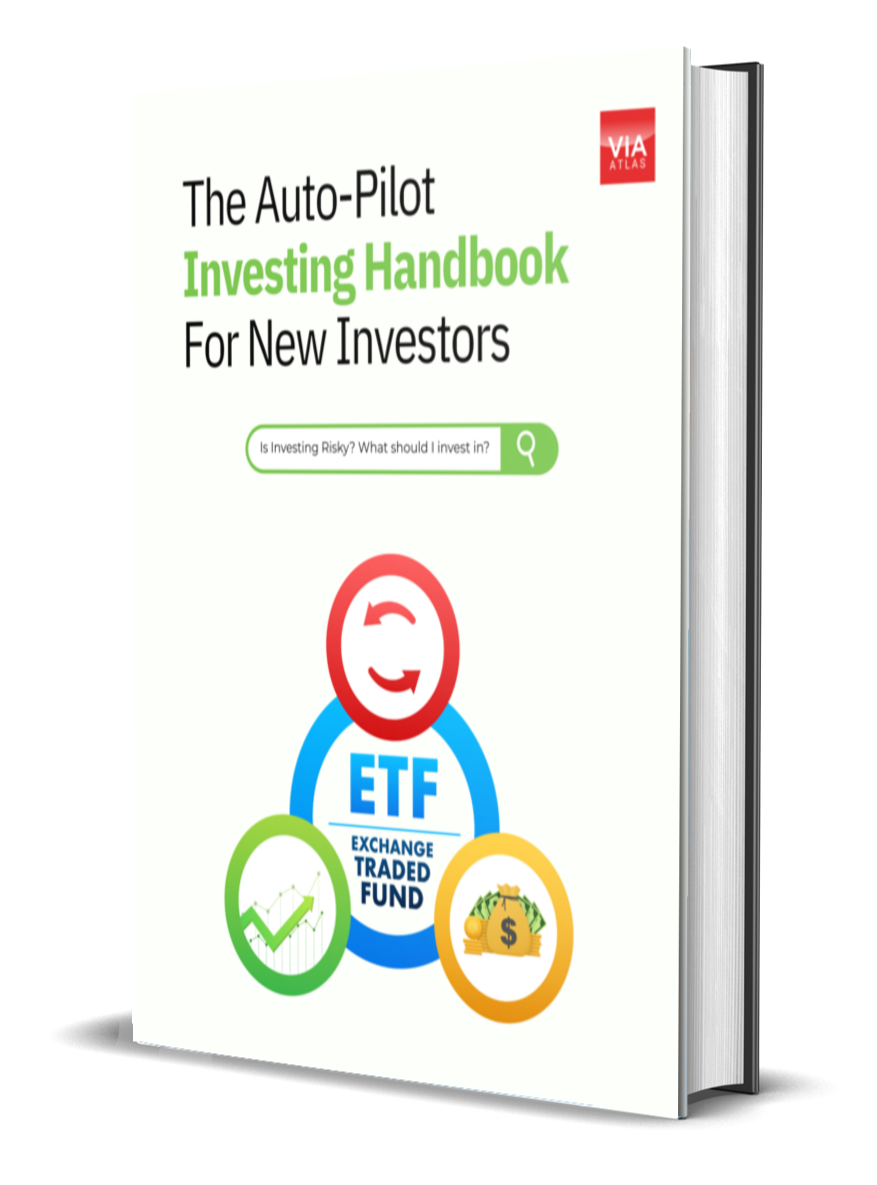Why Time Is Your Secret Weapon in Investing (And How to Use It Wisely)
Share this article
Imagine planting a mango seed. You water it, give it sunlight, and wait. In the first year, nothing happens. By year five, you see a small tree. At year 20? It’s towering, bearing fruit every season without fail.
Investing works the same way
If you’re new to investing, you’ve probably heard stories of people getting rich overnight. The truth? Those stories are like lottery wins—rare and risky. Real wealth grows slowly and steadily, and your greatest ally is something you already have: time.
In this article, you'll learn:
- Why trying to 'get-rich-quick' usually backfires
- How time turns small investments into life-changing sums
- A simple way to start - no expertise required

The Myth of Getting Rich Quick
Let’s be honest: we’ve all dreamed of turning $100 into $1,000 overnight. But investing isn’t a magic trick. Here’s why chasing quick wins fails:
1. Markets Move Like Weather, Not Clocks
2. Fees and Stress Eat Your Gains
Frequent trading racks up fees. Even a 1% fee sounds small, but over 30 years, it could cost you 30% of your potential wealth
3. Most 'Hot Tips' Burn Out
Why Time Horizon Is Your Superpower
1. Compound Growth: The Snowball Effect
Compound growth means your money earns returns on its returns. For example:
- Invest $100 / month starting at age 25 (7% annual growth). By 65, you will have $525,000.
- Start at age 35? You'd need $450 / month to reach the same goal.
Time lets your money work while you sleep.
2. Markets Rise Over Decades (Despite Short-Term Dips)
Since 1950, the S&P500 (500 top U.S. companies) has grown 10% annually on average.
Yes, it drops some years (like ~19% in 2022), but over 20+ years, it always recovered and climbed higher.
3. Long Horizons Reduce Risk
With decades ahead, you can ride out crashes. For instance:
- If you invested in 2008 (during the financial crisis) and held for 15 years, your portfolio would have tripled.
- Panic sellers lost up to 50% of their savings
Financial Market Players: Time Horizons vs. Value Investing
| Player Type | Time Horizon | Strategy | Risk Level | Typical Investments |
| Day Traders | Minutes to hours | Buy/sell assets based on intraday price swings using technical analysis. | Very High | Stocks, forex, cryptocurrencies. |
| Swing Traders | Days to weeks | Capture short-term trends in asset prices. | High | Volatile stocks, ETFs, commodities |
| Growth Investors | 3–5 years | Target companies expected to grow faster than the market (e.g., tech startups). | Moderate-High | High-growth stocks (Tesla, AI firms) |
| Dividend Investors | 5–10 years | Focus on steady income from dividend-paying stocks. | Moderate | Utilities, consumer staples (Procter & Gamble, REITs) |
| Institutional Investors | Decades | Manage large portfolios (pensions, endowments) with diversified strategies. | Low-Moderate | Bonds, stocks, real estate, private equity |
| Algorithmic Traders | Milliseconds to days | Use AI/models to execute trades based on market data patterns. | High | High-frequency trading in stock, futures, options |
| Speculators | Hours to days | Bet on price movements (e.g., meme stocks, crypto). | Extreme | Cryptocurrencies, penny stocks, options |
| Passive Investors | 10+ years | Buy-and-hold diversified assets (ETFs, index funds). | Low | S&P500 ETFs, global index funds |
| Value Investors | 5+ years | Buy undervalued companies with strong fundamentals and hold long-term. | Low-Moderate | Undervalued stocks, value ETFs, dividend aristocrats |
Key Takeaways: How Value Investing Stands Out
1. Long-Term Focus v.s. Short-Term Noise
- Most players (day traders, speculators prioritize quick gains, exposing them to high volatility and stress
- Value Investing ignores daily market swings, focusing on companies trading below their true worth.
2. Risk Management
- Short-term strategies (trading, speculation) risk significant losses from unpredictable events (e.g. Fed fund changes)
- Value Investing uses a margin of safety - buying undervalued stocks reduces downside risk.
3. Alignment with Financial Goals
- Value Investing's 5+ year horizon aligns with goals like retirement, education, or buying a home. Studies show portfolios with a 10+ year horizon historically outperform short-term bets.
4. Reduced Research Burden
👉Join Our Webinar: Learn step-by-step company analysis and see a demonstration of the Case Study IV Directory to screen pre-vetted stocks.
Why Time Horizon Matters for Beginners
| Horizon | Risk Tolerance | Suitable For |
| Short-Term | Low | Emergency funds, vacations (savings accounts, short-term bonds) |
| Medium-Term | Moderate | Home down payments, education (dividend stocks, balanced ETFs). |
| Long-Term | Higher | Retirement, generational wealth (Value Investing, S&P 500 ETFs). |
How to Start: Think Like a Gardener, Not a Gambler
Step 1: Pick Simple, Diverse Investments
- Vanguard S&P 500 ETF (VOO): 500 top U.S. companies
- Nikko AM STI ETF (Singapore): 30 major SGX-listed firms
These spread risk and grow steadily over time.
Step 2: Automate Small Amounts
If you are using Interactive Brokers, you can also create an RSP (Regular Savings Plan). Check if your broker allows fractional shares and RSP.
POSB also allows you to create an RSP. To find out more, you can download our ETF Investing Guide below.
Step 3: Ignore the Noise
Patience Pays: Real-Life Examples
The Coffee Drinkers vs. The Savers
- Person A: Spends $5 / day on coffee ($150 / month). Over 30 years, that's $54,000 spent.
- Person B: Invests $150 / month (7% growth). After 30 years: $183,000
The Early Starter v.s. The Late Bloomer
- Start at 25: $300 / month for 40 years = $1.2 million
- Start at 35: $600 / month for the same result.
Final Word: The Best Time to Start Was Yesterday. The Next Best? Today.
P.S. Your future self will thank you. Click here to get your free ETF guide.
Ready to take the first step?

Get Your Free ETF eGuide
- Learn how to invest in your first ETF
- What is Index (ETF) Investing - the One Thing Needed for a Worry-Free Retirement
- The Power of Compounding - 8th Wonder of the World
- How to Keep Risk Low with Diversification & DCA
- How To Invest on AutoPilot using Exchange-Traded Funds (ETFs), Effortlessly

Suitable For
Solutions For
Mind Kinesis Investments Pte Ltd. All Rights Reserved.


